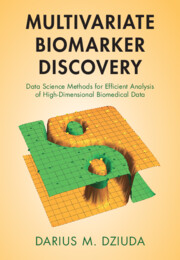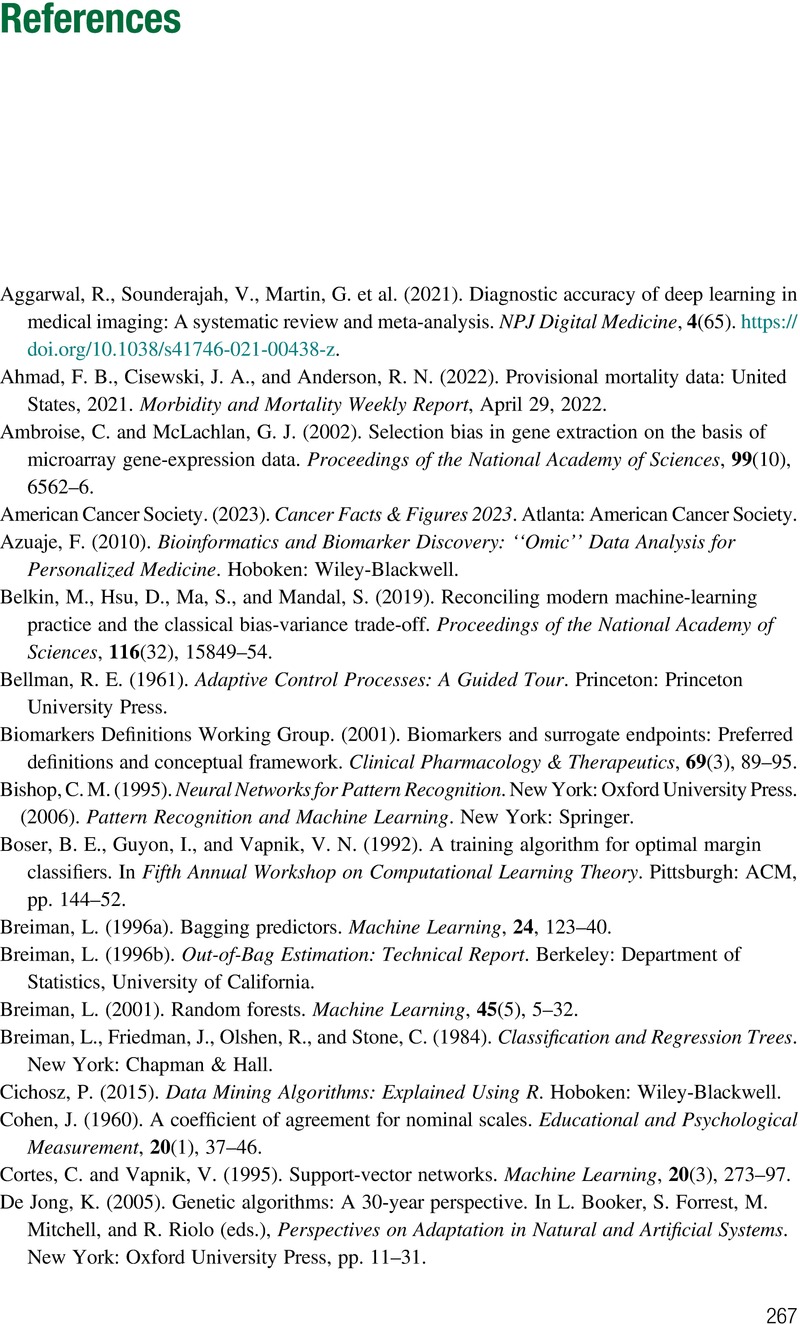 Multivariate Biomarker Discovery
Multivariate Biomarker Discovery Book contents
- Multivariate Biomarker Discovery
- Multivariate Biomarker Discovery
- Copyright page
- Dedication
- Contents
- Preface
- Acknowledgments
- Part I Framework for Multivariate Biomarker Discovery
- Part II Regression Methods for Estimation
- Part III Classification Methods
- Part IV Biomarker Discovery via Multistage Signal Enhancement and Identification of Essential Patterns
- Part V Multivariate Biomarker Discovery Studies
- References
- Index
- References
References
Published online by Cambridge University Press: 30 May 2024
- Multivariate Biomarker Discovery
- Multivariate Biomarker Discovery
- Copyright page
- Dedication
- Contents
- Preface
- Acknowledgments
- Part I Framework for Multivariate Biomarker Discovery
- Part II Regression Methods for Estimation
- Part III Classification Methods
- Part IV Biomarker Discovery via Multistage Signal Enhancement and Identification of Essential Patterns
- Part V Multivariate Biomarker Discovery Studies
- References
- Index
- References
Summary

- Type
- Chapter
- Information
- Multivariate Biomarker DiscoveryData Science Methods for Efficient Analysis of High-Dimensional Biomedical Data, pp. 267 - 272Publisher: Cambridge University PressPrint publication year: 2024


